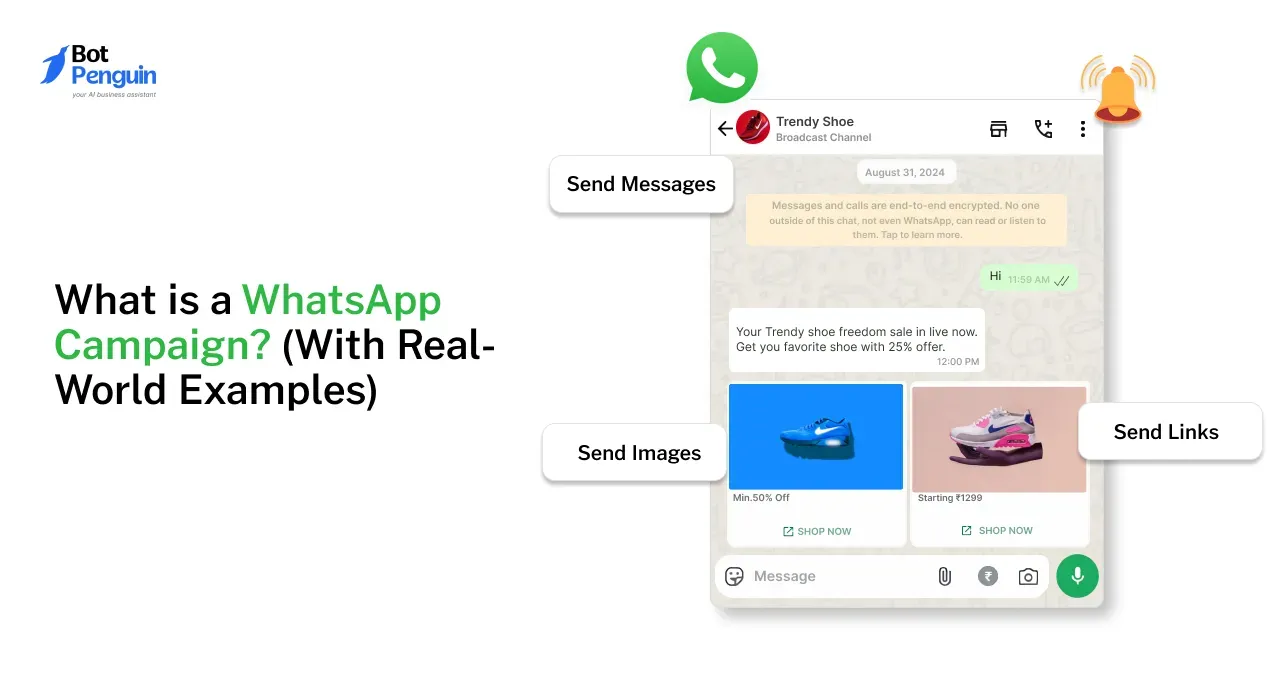The debate between chatbot vs conversational AI technologies has gained significant traction.
As businesses strive to enhance customer interactions, understanding the key differences between chatbots vs conversational AI has become crucial.
According to a report by Grand View Research, the global conversational AI market size is expected to reach $32.62 billion by 2030, growing at a CAGR of 20.0% from 2023 to 2030. This growth highlights the increasing importance of both chatbots and conversational AI in various industries.
While chatbots have been around for decades, conversational AI represents a more advanced iteration of this technology. The distinction between conversational AI platforms vs chatbot platforms lies in their capabilities, complexity, and ability to understand and respond to human language.
This article aims to demystify the chatbot vs conversational AI debate, exploring their unique features, applications, and potential impact on customer engagement strategies.
What are Chatbots?
Chatbots are software applications designed to simulate human conversation. They are typically used in customer service to handle inquiries, provide information, or perform simple tasks.
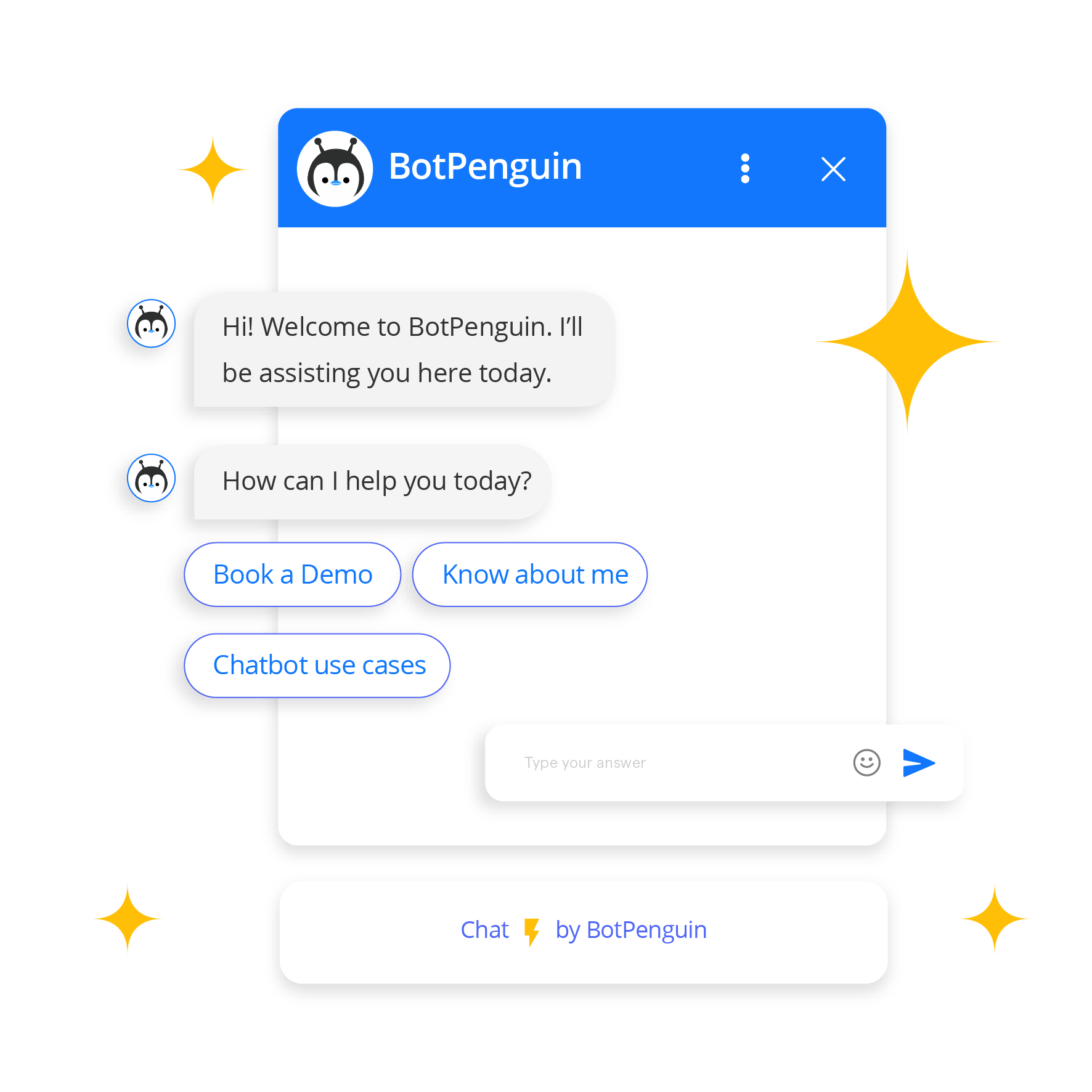
Types of Chatbots
Rule-based chatbots follow predefined paths. They respond to specific commands or keywords. These chatbots are straightforward but limited in their interactions.
For instance, a rule-based chatbot might be used for simple tasks like providing office hours or basic troubleshooting.
Other Types of Chatbots Include:
- Hybrid Chatbots Combine rule-based and AI elements, offering structured paths while also adapting to user needs.
- Voice-activated chatbots Allow users to interact through voice commands, providing hands-free assistance.
AI-based chatbots, on the other hand, use machine learning to understand and respond to a wider range of inputs. They learn from past interactions to improve over time.
AI-based chatbots can handle more complex tasks and provide more accurate responses, making them ideal for dynamic customer service scenarios.
Examples of Chatbot Applications
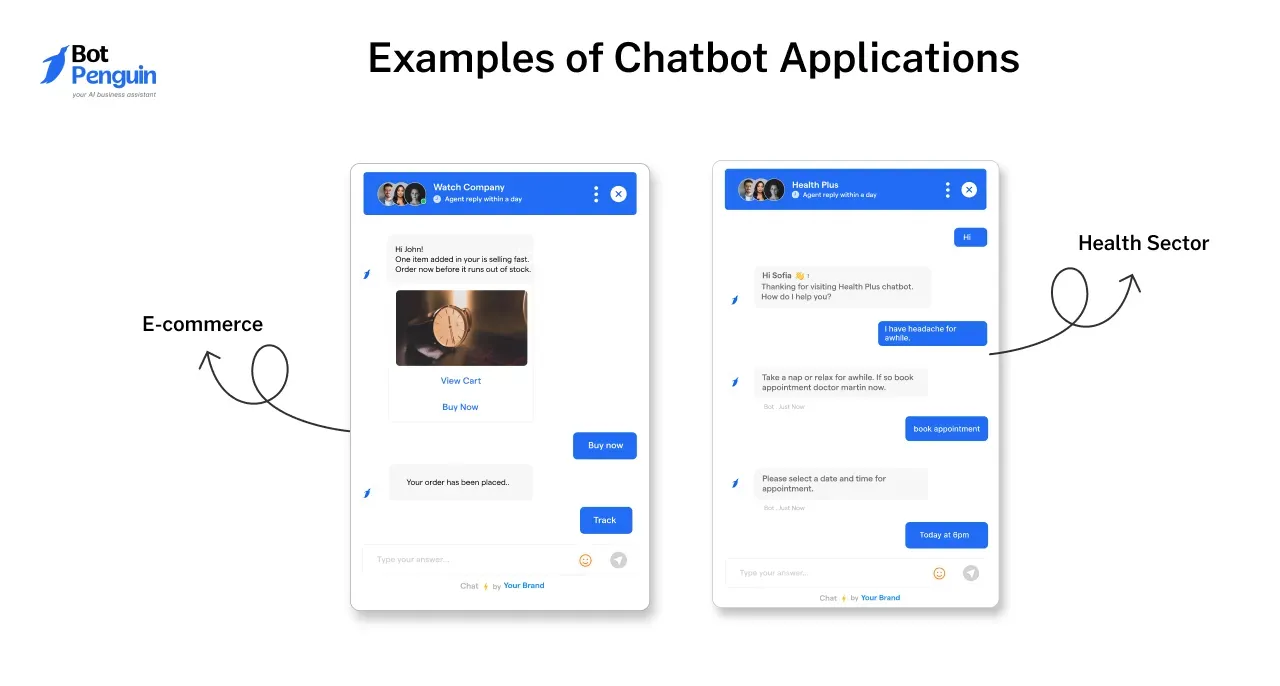
Chatbots are increasingly utilized across various fields, demonstrating their versatility in enhancing customer interaction and operational efficiency.
In e-commerce, they assist with product recommendations, answer customer queries, and track orders, making the shopping experience smoother and more personalized.
In healthcare, chatbots provide symptom checking, appointment scheduling, and medication reminders, allowing patients to access information quickly and manage their health more effectively.
In the banking sector, chatbots handle balance inquiries, transaction alerts, and even fraud detection, helping customers manage their finances effortlessly.
Travel companies employ chatbots to assist with booking flights, checking flight statuses, and providing destination information, which streamlines the travel planning process.
In education, chatbots support student enrollment, provide answers to common questions, and assist with course selection, enhancing the overall student experience.
Real estate agencies use chatbots to schedule property viewings, answer inquiries about listings, and provide market insights, making the home-buying process more accessible.
Additionally, in human resources, chatbots facilitate employee onboarding, answer policy-related questions, and help manage leave requests.
These diverse applications underscore the adaptability of chatbots across industries, transforming how organizations engage with customers and streamline their operations.
What is Conversational AI?
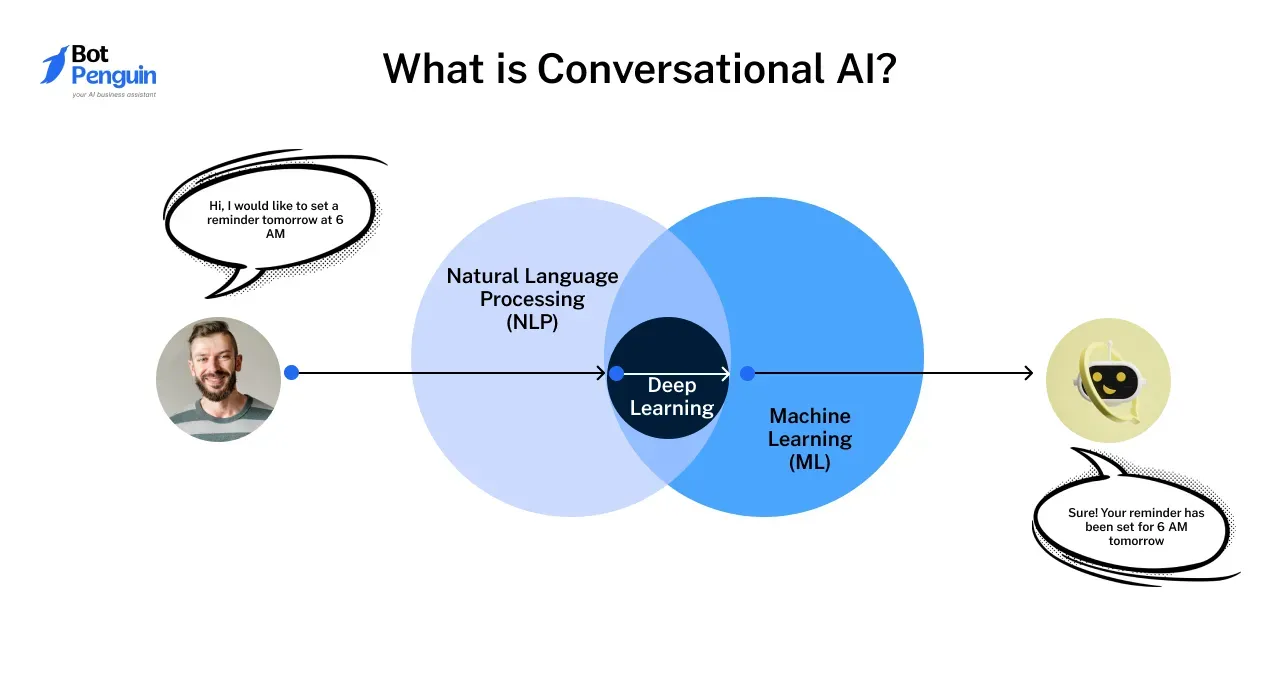
Conversational AI refers to technologies that enable machines to understand, process, and respond to human language naturally.
It goes beyond simple interactions to provide more complex and contextually relevant responses.
Components of Conversational AI
Natural Language Processing (NLP) is a key component. It allows machines to understand and interpret human language.
Machine Learning (ML) helps in learning from interactions and improving over time. Other components include speech recognition and sentiment analysis, which enhance the ability to provide human-like interactions.
Examples of Conversational AI Applications
Conversational AI is used in virtual assistants like Siri and Alexa. These platforms can perform a variety of tasks, from setting reminders to controlling smart home devices.
In customer service, conversational AI can handle complex inquiries, providing personalized responses. It’s also used in automated help desks and advanced chatbots, showing the potential of chatbot vs conversational AI in delivering sophisticated user experiences.
Key Differences Between Chatbots and Conversational AI

Understanding the key differences between chatbot vs conversational AI helps in making better technology choices for your business.
Each has distinct characteristics, strengths, and applications. Here’s a detailed comparison to clarify these differences.
Technology and Complexity
Chatbots are typically built on simpler technology. They follow predefined scripts and workflows. This makes them easy to implement and manage but limits their scope.
Rule-based chatbots operate on set commands and can only respond to specific inputs. They are suitable for straightforward tasks, like answering FAQs or providing basic information. However, their inability to handle complex queries can be a limitation.
Conversational AI, on the other hand, employs advanced technologies like Natural Language Processing (NLP) and Machine Learning (ML). These technologies enable conversational AI to understand and interpret human language more accurately.
It can handle a wider range of inputs and provide more nuanced responses. Conversational AI’s complexity allows it to perform tasks beyond the capabilities of simple chatbots, making it more versatile and effective for dynamic interactions.
Chatbots Scripted Responses
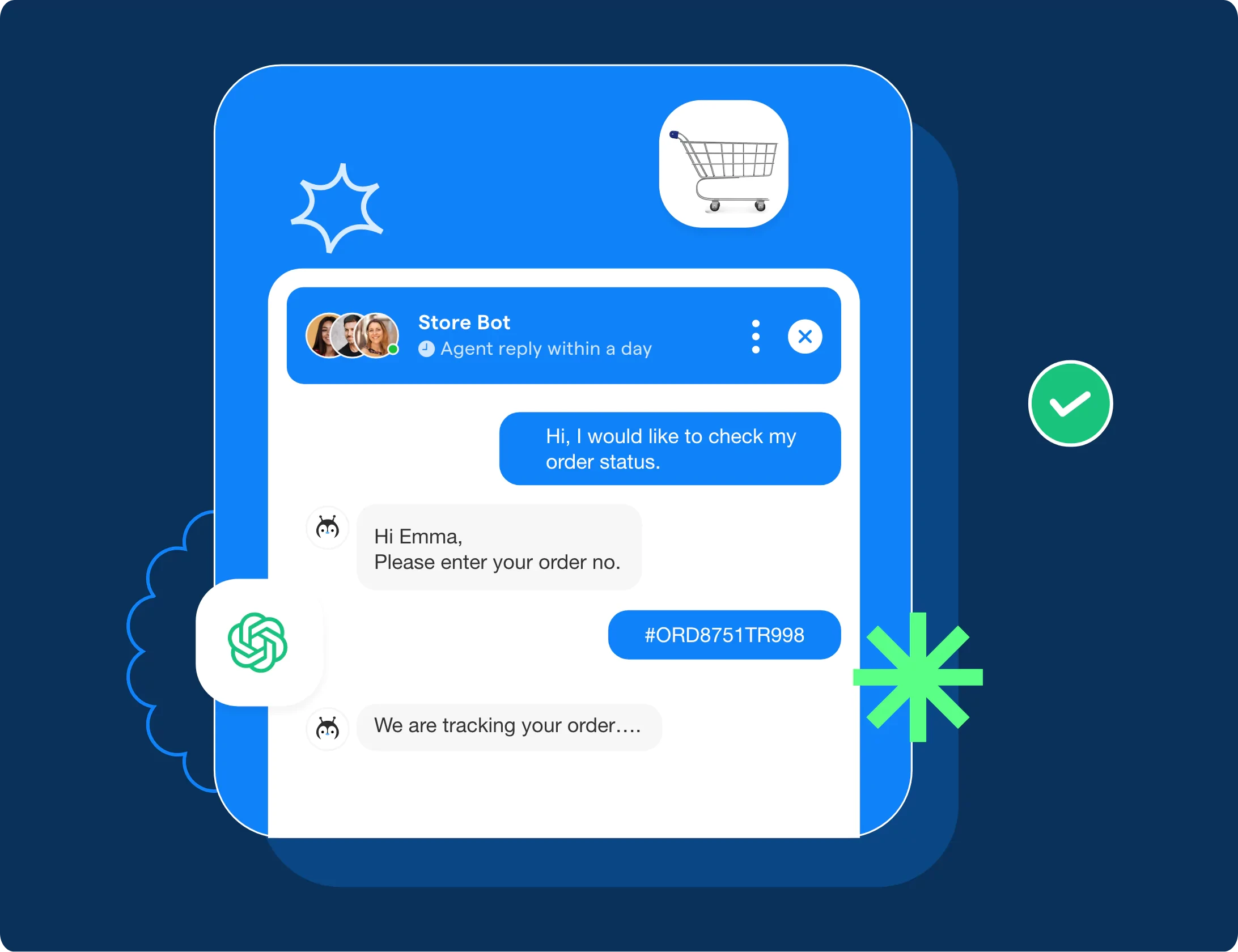
Chatbots rely on scripted responses. Their interactions are limited to the predefined paths created during their development. This can make the interaction feel robotic and less engaging. Users often have to adjust their queries to fit the chatbot’s programmed responses.
This scripted nature can lead to frustration if the chatbot fails to understand a query outside its programmed scope.
Conversational AI offers more adaptive and context-aware responses. It uses NLP to understand the context and intent behind user queries, enabling more natural and human-like interactions.
Conversational AI can remember previous interactions and use that information to provide more relevant responses. This adaptability enhances user experience by making interactions more fluid and less constrained by predefined scripts.
Limited Learning
Basic chatbot systems have limited learning capabilities. They operate based on the rules and scripts set by their developers, resulting in a performance that remains relatively static.
While some advanced chatbots incorporate basic machine-learning techniques to make minor improvements, their ability to adapt and learn from interactions is minimal. This means they often struggle to respond effectively to queries outside their initial programming.
In contrast, conversational AI continuously learns and improves over time. Utilizing machine learning, it analyzes user interactions to enhance its understanding and refine its responses.
This ongoing learning process enables conversational AI to become increasingly accurate and effective with each interaction.
Such continuous improvement is crucial for applications that require nuanced understanding and adaptability, ensuring that the technology can meet evolving user needs and expectations.
By distinguishing between static chatbots and dynamic conversational AI, organizations can make informed decisions about which technology best suits their communication strategies.
Simple Tasks and Predefined Queries
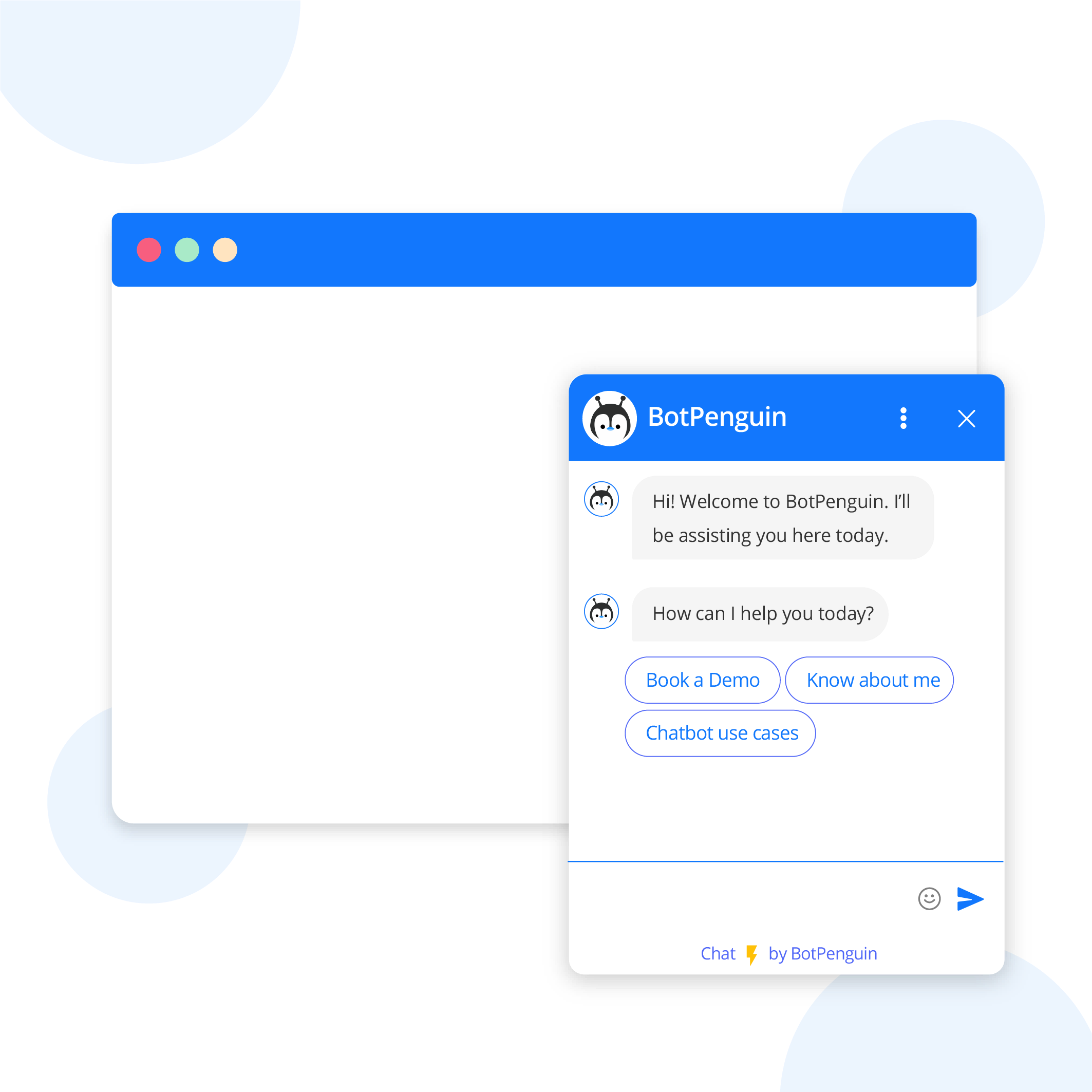
Chatbots are ideal for handling simple tasks and predefined queries. They are commonly used in customer service for answering FAQs, providing basic information, and performing straightforward tasks like booking appointments.
Their simplicity and ease of deployment make them suitable for scenarios where interactions are predictable and repetitive.
Conversational AI excels in handling complex tasks and dynamic interactions. It’s used in applications requiring sophisticated understanding and responses, such as virtual assistants, personalized customer support, and intricate problem-solving.
Conversational AI platforms vs chatbot platforms often offer more advanced features, supporting a wider range of tasks and providing more value in complex scenarios.
Advantages and Disadvantages
Choosing between chatbot vs conversational AI involves weighing their advantages and disadvantages.
Each technology has distinct benefits and limitations that can impact its suitability for different applications.
Advantages
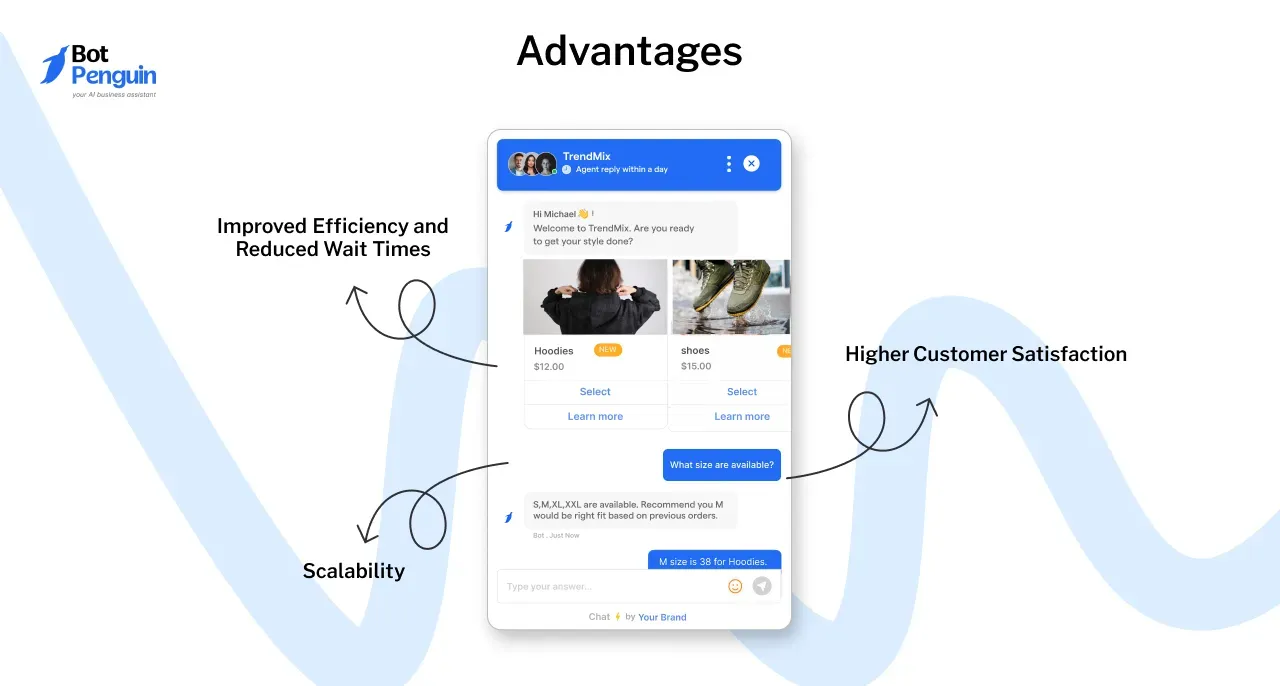
Chatbots offer several notable advantages. Their simplicity makes them easy to implement and use. They are cost-effective, requiring less development time and resources.
This makes them an attractive option for businesses looking to automate basic tasks without significant investment. Chatbots can handle simple, repetitive queries efficiently, reducing the workload on human agents.
- Personalized Responses: Conversational AI can analyze user behavior, preferences, and past interactions, allowing it to provide tailored responses.
This personalization makes users feel heard and valued, significantly improving the relevance and effectiveness of each response.
- Higher Customer Satisfaction: By addressing specific needs and providing relevant, personalized answers, conversational AI enhances customer satisfaction.
Users are more likely to have positive experiences that meet or exceed their expectations.
- Increased Customer Loyalty: When users consistently have positive, personalized interactions, they are more likely to return and remain loyal.
This loyalty can translate into repeat business and long-term customer relationships.
- Learning and Adapting Over Time: Conversational AI can continuously learn from user interactions, refining its responses and improving over time.
This adaptability means it grows with user needs, making interactions even more accurate and relevant.
- Improved Efficiency and Reduced Wait Times: By understanding and addressing complex questions quickly, conversational AI minimizes wait times and boosts efficiency, especially in customer support scenarios.
This swift assistance leads to better user experiences and frees up human agents for more complex tasks.
- Scalability: Conversational AI systems can handle large volumes of queries simultaneously, making them ideal for organizations looking to scale their customer support or user engagement without compromising quality.
Overall, when comparing conversational AI vs chatbot solutions, conversational AI represents a significant advancement by providing highly personalized, scalable, and engaging user interactions.
This distinction in conversational AI vs chatbot capabilities allows conversational AI to foster greater satisfaction and loyalty through tailored and dynamic responses.
Suggested Reading:
Convert Visitors into Leads with Conversational AI
Disadvantages
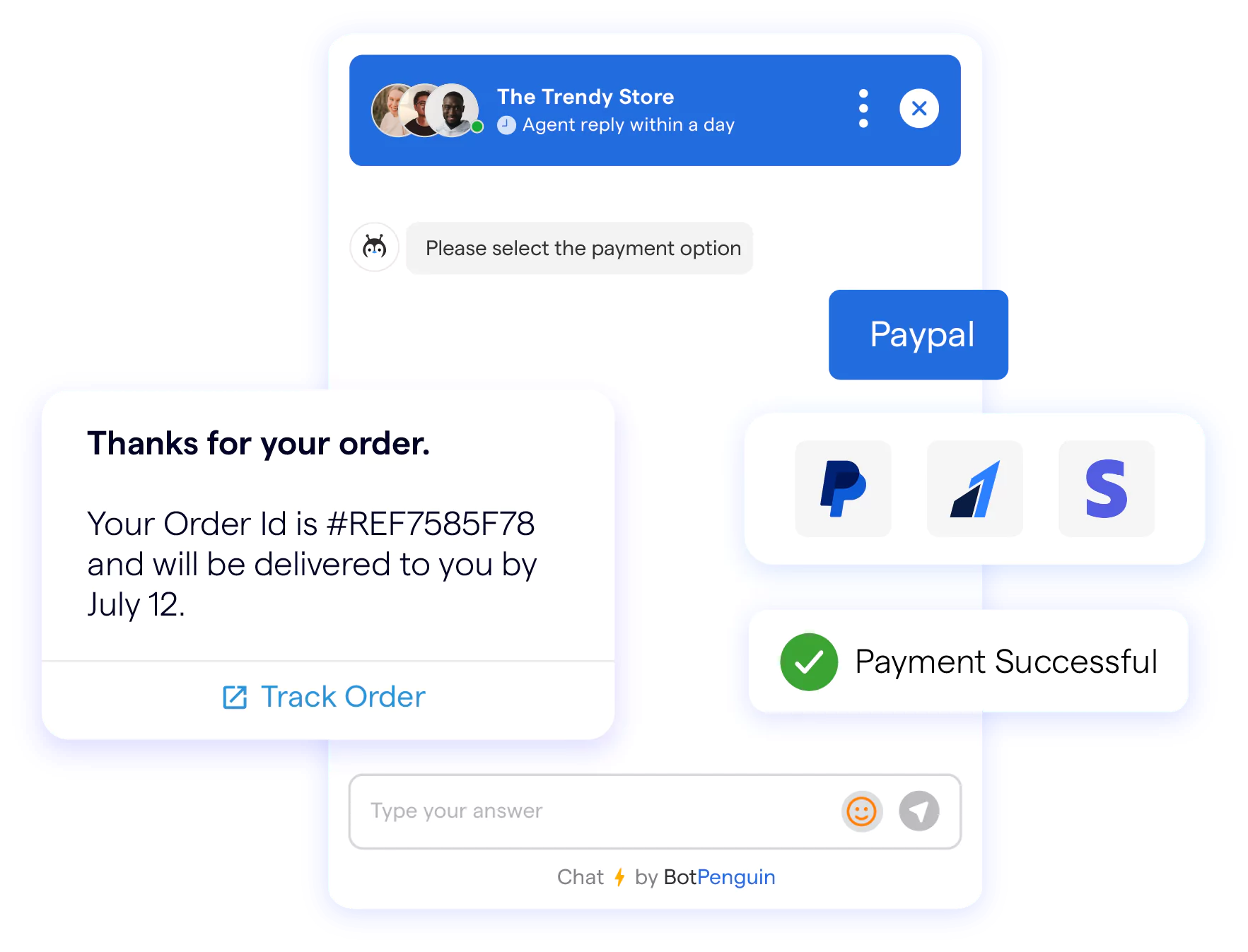
Chatbots come with limitations. Their functionality is restricted to predefined scripts and simple commands.
This can result in a lack of personalization, making interactions feel robotic and impersonal. Users might get frustrated if a chatbot fails to understand queries that fall outside its programmed responses.
- Specialized Expertise Needed: Building an effective conversational AI system requires expertise in fields like machine learning, NLP, and AI model training.
Finding and hiring professionals with these skills can be challenging and costly, particularly for smaller organizations without dedicated AI or data science teams.
- Longer Development and Deployment Times: Due to the complexity involved in building a conversational AI system, development times are typically longer than those for simpler chatbots.
It can take months or even years to design, train, and deploy a conversational AI model that performs well across various scenarios.
- Complex Integration with Existing Systems: Integrating conversational AI into an organization's existing technology infrastructure can be challenging.
Compatibility issues, data migration, and system upgrades may be necessary, adding further complexity and costs to the implementation process.
- Data Privacy and Compliance: Conversational AI often involves collecting and processing large amounts of user data to personalize interactions, which raises data privacy concerns. Ensuring compliance with data protection regulations, such as GDPR, adds another layer of complexity and potential cost.
- Scalability Challenges: While conversational AI can handle high volumes of queries, scaling it effectively across multiple channels or languages can increase complexity and resource demands.
As the system scales, maintenance and training requirements also rise, adding further costs.
- Risk of Poor User Experience if Not Done Right: If not developed and optimized correctly, conversational AI may misunderstand users or fail to provide accurate responses.
This can lead to frustrating user experiences, which may harm a brand’s reputation and customer satisfaction.
In summary, while conversational AI vs chatbot systems offer significant advantages, conversational AI’s complexities, high costs, and specialized requirements can present substantial challenges, especially for smaller organizations with limited resources.
When comparing conversational AI vs chatbot solutions, businesses must weigh the benefits of enhanced user experience and personalization against the financial and technical demands required for successful implementation.
Suggested Reading:
5 Things to look for in a Conversational AI Platform
Industry Usage and Applications
As businesses look for innovative ways to improve efficiency and customer interaction, the debate of conversational AI vs chatbot becomes increasingly relevant.
Different industries have adopted these technologies based on their unique needs and capabilities. Here’s a look at how various sectors are utilizing chatbots and conversational AI.
Current Adoption of Chatbots and Conversational AI Across Industries
The adoption of chatbot vs conversational AI varies significantly across industries, reflecting their specific requirements and challenges.
Chatbots, with their simplicity and cost-effectiveness, are widely used for straightforward tasks. Conversely, conversational AI’s advanced capabilities make it suitable for more complex interactions and personalized services.
Common Industries Using Chatbots
Given below are common industries using chatbots:
E-commerce

In e-commerce, chatbots assist customers with product recommendations, order tracking, and addressing queries about returns and refunds.
Their ability to provide 24/7 support helps businesses maintain high levels of customer engagement and satisfaction, leading to increased sales and customer loyalty.
Customer Service
It is one of the primary areas where chatbots are extensively used. They handle routine inquiries, resolve common issues, and provide instant responses, improving response times and freeing up human agents for more complex tasks. This reduces operational costs and enhances customer satisfaction.
Healthcare
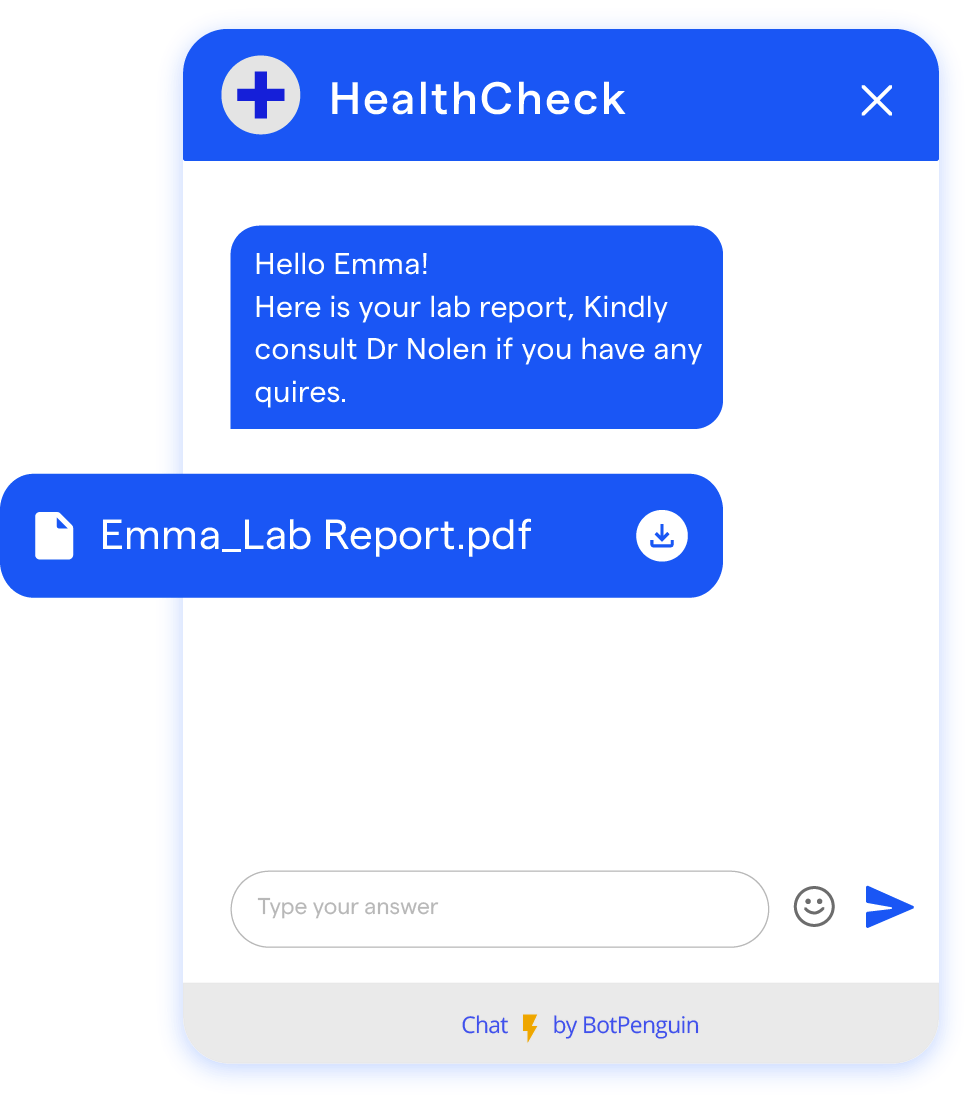
The healthcare industry uses chatbots to manage patient inquiries, schedule appointments, and provide preliminary diagnoses based on symptoms.
This streamlines administrative processes, allowing healthcare professionals to focus on providing quality care. Chatbots also help disseminate important health information and reminders for medication adherence.
Common Industries Using Conversational AI
Conversational AI is widely used across various industries, including customer service, where it streamlines support and enhances user experience, and healthcare, where it assists with patient inquiries and appointment scheduling.
Other sectors like finance and retail also leverage conversational AI for efficient transaction processing and personalized shopping experiences.
Travel and Hospitality
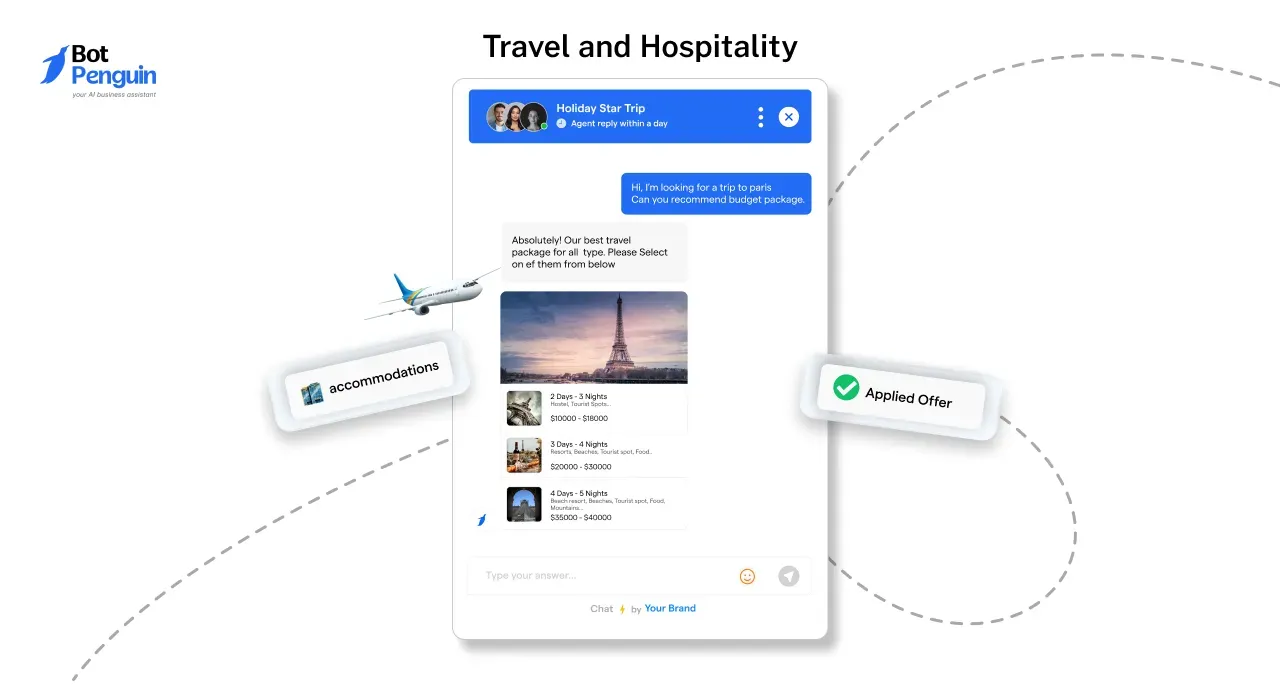
In the travel and hospitality sector, conversational AI enhances the booking experience, provides personalized travel recommendations, and manages customer inquiries in real time.
These systems can handle complex queries about travel itineraries, accommodations, and local attractions, offering a seamless and customized travel experience.
Finance
Finance industries leverage conversational AI for personalized customer interactions, fraud detection, and financial advice.
Advanced algorithms enable these systems to understand complex financial queries, provide tailored recommendations, and detect unusual activity, enhancing both customer service and security.
Education

The education industry uses conversational AI to support personalized learning experiences. AI tutors provide tailored assistance, answer student queries, and offer recommendations based on individual learning patterns.
This technology also helps in administrative tasks like enrollment and scheduling, making educational processes more efficient.
Conclusion
As we've explored the key differences between chatbot vs conversational AI, it's clear that both technologies have their place in modern business communication strategies.
The choice between conversational AI platforms vs chatbot platforms ultimately depends on an organization's specific needs, budget, and desired level of interaction sophistication.
While traditional chatbots offer a cost-effective solution for simple, rule-based interactions, conversational AI provides a more advanced, human-like experience capable of handling complex queries and learning from each interaction.
As the technology continues to evolve, the line between chatbot vs conversational AI may blur further, leading to even more powerful and intuitive communication tools.
Platforms like BotPenguin are at the forefront of this evolution, offering solutions that bridge the gap between chatbot vs conversational AI.
By leveraging such platforms, businesses can stay ahead of the curve in the ongoing chatbot vs conversational AI debate, ensuring they provide the best possible customer experience in an increasingly digital world.
Frequently Asked Questions (FAQs)
What industries benefit most from conversational AI?
Industries like finance, travel, and education benefit from conversational AI due to its ability to handle complex, personalized interactions and provide advanced, context-aware support and recommendations.
Are chatbots cheaper to implement than conversational AI?
Yes, chatbots are generally cheaper to implement and maintain due to their simpler, rule-based nature, making them cost-effective for handling routine, repetitive tasks.
Can conversational AI improve over time?
Yes, conversational AI continuously learns and improves from interactions using machine learning, enabling it to provide increasingly accurate and personalized responses over time.
What are some common applications of chatbots?
Chatbots are commonly used in customer service, e-commerce for product recommendations and order tracking, and healthcare for scheduling appointments and providing basic medical information.
Can conversational AI handle multiple languages?
Yes, conversational AI is often designed to handle multiple languages, allowing businesses to offer support to a global customer base.
By leveraging natural language processing (NLP), conversational AI can understand and respond in various languages, enhancing accessibility and broadening a company's reach across different regions.
What industries benefit most from conversational AI?
Apart from finance, travel, and education, other industries like retail and healthcare also significantly benefit from conversational AI.
In retail, AI chatbots enhance customer experiences by providing personalized product recommendations, managing orders, and addressing inquiries, while in healthcare, they assist in appointment scheduling, patient follow-ups, and basic triage services.

